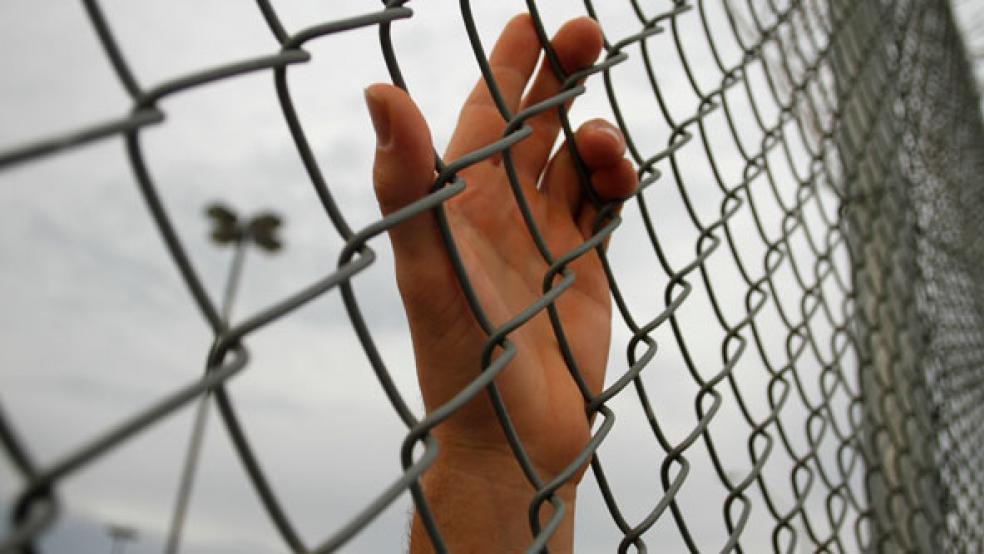One of the biggest factors driving the surge of unaccompanied children making the dangerous journey from Central America to the United States’ Southern border has been the incorrect impression that, once they arrive, they will be allowed to stay. Unfortunately, by vastly understaffing the country’s immigration courts, the U.S. government has made that myth appear to be reality.
Imagine this. What if the first wave of children in this migration of tens of thousands had been deported back to Honduras, El Salvador, or Guatemala a few months after they left home in the first place? It seems likely that word would have got around that, contrary to rumor, the United States was not providing blanket amnesty to children.
Related: National Guard Border Fix Is Fraught With Danger
In fact, according to the Economic Policy Institute in Washington, the vast majority of unaccompanied children crossing the border are designated for deportation once they come before a judge. The problem is that wait time for a hearing in immigration court is measured not in weeks or months, but in years.
According to Syracuse University’s Transactional Records Access Clearinghouse (TRAC), there was a backlog of 375,503 cases in the immigration court system as of the end of June. That’s more than twice the number of pending cases in 2008. It also translates into an average wait time, according to TRAC, of 587 days for an initial hearing, with wait times in some jurisdictions averaging much longer.
In Omaha, for instance, the average case takes 839 days to get in front of a judge. In Los Angeles, it’s 820, and in Phoenix it’s 808. And these are just averages. Immigration activists report some children waiting three to five years for a hearing. Worse yet, in some cases, the initial hearing is only part of the process; some drag on for years even after they first come before a judge.
Part of the reason is that the federal immigration court system is gravely understaffed when considering the magnitude of the task in front of it. There are currently about 243 immigration judges, or one to every 1,545 pending cases.
Related: Jeb Bush Warns GOP on Immigration Reform
This means that families in Central America who send their children north can report to friends and neighbors that those kids are in the United States and aren’t coming back anytime soon, creating an incentive for other parents to send their children on the perilous trip.
The worst part about this is that it was a completely predictable and avoidable problem.
There is a growing call among those most concerned about the influx of illegal immigrants to amend the William Wilberforce Trafficking Victims Protection Reauthorization Act of 2008, which many blame for the current crisis on the Southern border. Originally passed in 2000, and meant to protect the victims of human trafficking from being returned to dangerous circumstances, the law barred the immediate deportation of children who enter the US illegally, and who are not from Mexico or Canada. The immigration caseload, flat or declining in the years immediately before 2000, has been on a nearly uninterrupted rise ever since.
But all the law guarantees is a hearing – not amnesty. And the passage of a law promising a hearing to a large segment of illegal immigrants who would not otherwise be entitled to one ensured an increased workload for the immigration court system – a promise the U.S. government largely ignored.
Related: Perry Tests Obama by Sending Troops to the Border
“It’s sort of ironic the one part of the immigration system that is underfunded is the one that provides due process to immigrants,” said Daniel Costa, Director of Immigration Law and Policy Research for the Economic Policy Institute in Washington. In recent years, he said, funding for immigration enforcement operations increased 300 percent – that’s the part of the system charged with apprehending illegal immigrants and bringing them before a judge. Over the same time frame, said Costa, the funding for the courts rose only 70 percent.
“If there wasn’t an immigration court crisis, there wouldn’t really be a border crisis,” said Costa. “The crisis is that we can’t provide everybody with a hearing. If they were being processed in an orderly fashion – if their cases were being processed in 60, 90, or 100 days, I don’t know if people would be making so much noise about it.”
President Obama’s $4 billion proposal to address the crisis on the border would allow for the hiring of a few dozen judges. A more expansive proposal being pushed by Sen. Barbara Mikulski would provide for substantially more. Given the backlog, though, there’s no likelihood, in the near term, of changing the impression many potential illegal immigrants have that, simply by crossing the border, they will get to stay in the U.S. indefinitely.
Reducing the backlog is going to take years – even with additional funding, said Costa. “Even if you to double or triple the immigration judges you aren’t going to do it overnight.”
Top Reads from The Fiscal Times
- EU Agrees to Russia Sanctions; US Could Arm Ukraine
- Chikungunya, and Other Diseases You Now Have to Worry About
- Paul Ryan’s State-Based Poverty Plan Could Assure “Two Americas”





